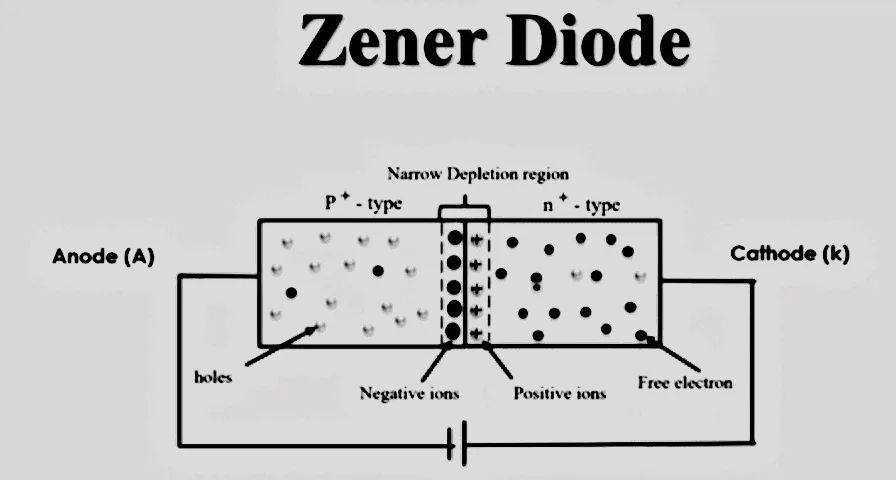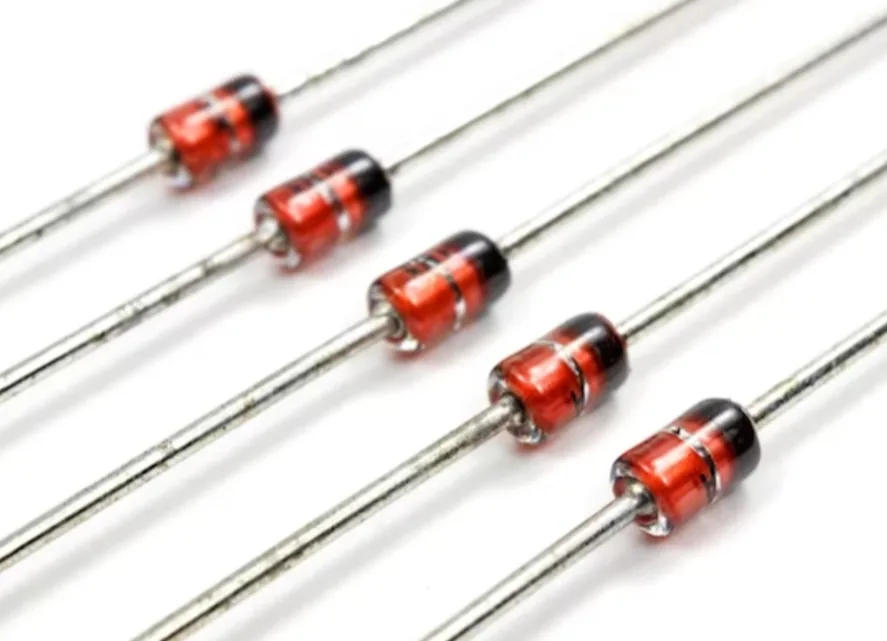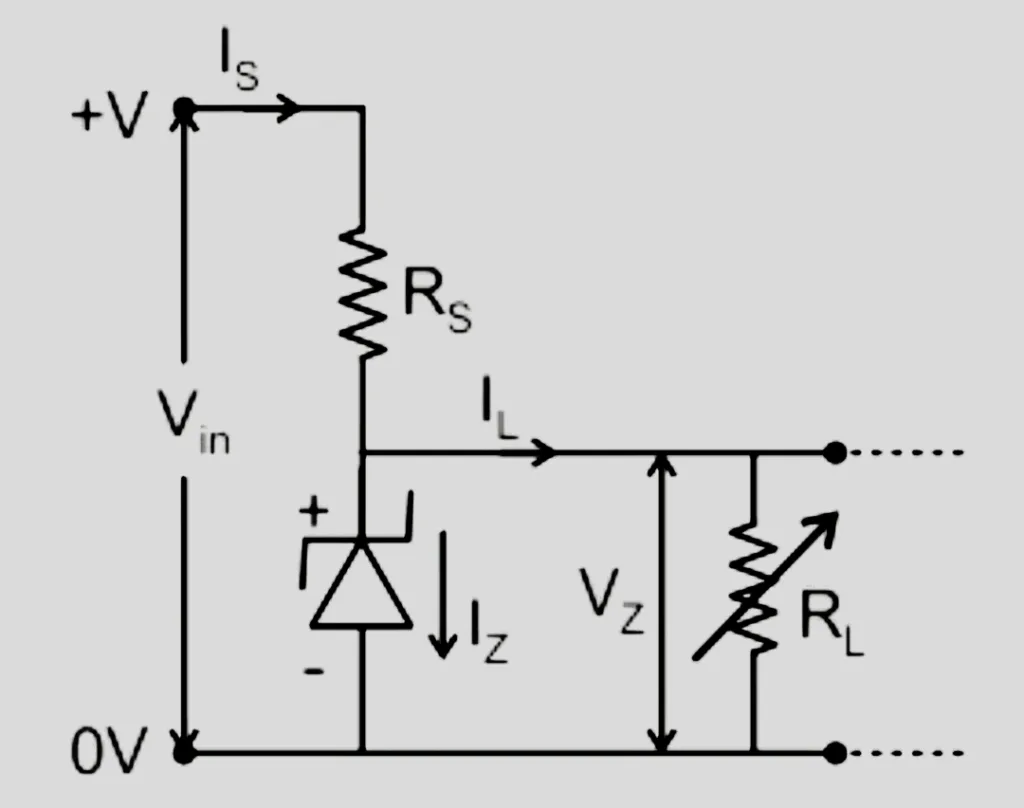Introduction
Zener diodes are a fundamental component in electronics, play an important role in voltage regulation and protection circuits. In this article, we’ll understand the workings of Zener diodes, their applications, and importance in various electronic devices.
Table of Contents
Understanding Diodes
Before understanding Zener diodes, it’s essential to understand regular diodes. A diode allows current to flow in only one direction, blocking it in the opposite direction. This property forms the basis for more specialized diodes like Zener diode.
History of Zener Diode
The zener diode, named after physicist Clarence Zener who discovered the zener effect in 1934, is a specialized diode designed to used the reverse breakdown voltage of a p-n junction. Early developments in semiconductor technology led to the creation of the first zener diodes, primarily used for voltage reference and regulation applications.
Introduction to Zener Diode
A Zener diode is a special type diode which is designed to operate in reverse-biased conditions. Unlike regular diodes that break down when reverse-biased, Zener diodes used the Zener effect to conduct a controlled amount of current in reverse biased condition.
The Zener Effect
The Zener effect occurs when a high electric field is applied across a heavily doped p-n junction in a diode. This causes the depletion region to narrow, allowing electrons to tunnel through the barrier. This unique behavior gives rise to the Zener breakdown, where the diode enters a reverse-conducting state.
Symbol and Structure
Zener diodes share the same basic structure as regular diodes but zener diode have highly doped p and n region which makes depletion layer narrow.



Zener Diode Characteristics
Zener diode possess distinct characteristics that set them apart from other electronic components. These characteristics enable Zener diodes to perform their critical functions in voltage regulation, protection, and reference Circuit.
1. Breakdown Voltage
The most significant characteristic of a Zener diode is its breakdown voltage, often referred to as the Zener voltage. This is the specific reverse-biased voltage at which the diode begins to conduct in the reverse direction. By controlling the doping levels during manufacturing, different Zener diodes with distinct breakdown voltages can be produced.
Mathematically, the breakdown voltage (Vz) of a Zener diode can be expressed as follows:
Vz = Vz(min) + Iz × Zz
where:
- Vz represents the actual Zener voltage during operation.
- Vz(min) is the minimum Zener voltage specified for the diode.
- Iz stands for the Zener current flowing through the diode.
- Zz signifies the Zener impedance of the diode.
2. Sharp Voltage Regulation
Zener diode exhibit remarkable voltage regulation capabilities. Once the diode enters the breakdown region, it maintains a nearly constant voltage across its terminals, even as the current varies. This property makes Zener diode invaluable in maintaining a stable output voltage in various electronic circuits, ensuring consistent performance.
3. Precision and Accuracy
Due to their well-defined breakdown voltage, Zener diode offer precise voltage references for circuits that demand accuracy. This characteristic is particularly advantageous in applications such as analog-to-digital converters, where maintaining accurate reference voltages is crucial for reliable signal conversion.
4. Reversible Breakdown
Unlike standard diodes that experience irreversible breakdown, Zener diode exhibit a controlled and reversible breakdown. This means that once the reverse voltage is reduced below the breakdown voltage, the diode returns to its non-conducting state.
5. Low Dynamic Resistance
Zener diode showcase low dynamic resistance in their breakdown region. This means that even slight changes in reverse voltage lead to relatively small variations in current. Consequently, Zener diodes offer stable voltage regulation over a wide range of currents.
rd = ΔV / ΔI
Where:
- rd is the dynamic resistance
- ΔV is the change in voltage
- ΔI is the change in current
6. Temperature Dependence
While Zener diode provide exceptional voltage regulation, their characteristics can be influenced by temperature changes. To counter this, temperature-compensated Zener diode are designed to minimize the impact of temperature variations on their performance.
The relationship between the change in Zener voltage (ΔVz) and the change in temperature (ΔT) is expressed using the temperature coefficient (α):
ΔVz = α * Vz * ΔT
Where:
- ΔVz is the change in Zener voltage due to temperature variation
- α is the temperature coefficient
- Vz is the nominal Zener voltage
- ΔT is the change in temperature
7. Power Dissipation
Zener diodes can handle a specific amount of power dissipation without compromising their operation. Exceeding this power limit can result in thermal breakdown. Designers must consider this characteristic when selecting Zener diodes for various applications.
The mathematical expression for calculating power dissipation in a Zener diode can be derived using Ohm’s law and the basic power formula:
Pd = Vz * Iz
Where:
- Pd is the power dissipation in watts
- Vz is the Zener voltage across the diode
- Iz is the Zener current flowing through the diode
Zener Diode Breakdown
Zener breakdown occurs in Zener diodes when the applied reverse voltage exceeds the diode’s breakdown voltage. This controlled breakdown allows the diode to conduct a constant voltage across its terminals, which is crucial for voltage regulation.
Zener Diode Voltage Regulation
One of the primary applications of Zener diodes is voltage regulation. By connecting a Zener diode in parallel with a load, a stable voltage is maintained across the load even if the input voltage varies. This makes Zener diodes integral to power supply circuits.
Types of regulations
Line Regulation: In line regulation, keeping Output voltage (Vz), limiting resistance(Rs) and load resistance(RL) constant. But input voltage (Vin) is varying.
Load Regulation: In load regulation, keeping Output voltage (Vz), limiting resistance(Rs) and input voltage (Vin) constant. But load resistance(RL) is varying.
Voltage Regulation: When zener diode operated in the breakdown region, it maintains a nearly constant voltage drop across its terminals. This voltage is known as the “Zener voltage” (Vz). The Zener voltage is determined by the diode’s construction and doping levels. This property forms the basis of its application as a voltage regulator.
Voltage Regulation Circuit: To use a Zener diode as a voltage regulator, it is connected in parallel with a load resistor (RL) across a power supply voltage (Vin) and a series resistance(Rs) also known as limiting resistance. The Zener diode is reverse-biased, and it’s breakdown voltage is Vz.

5. How It Works: When the input voltage (Vin) increases, it causes the voltage across the load resistor (Vout) to also increase. As Vout approaches the Zener voltage (Vz), the Zener diode starts to conduct in the reverse breakdown region. This shunts excess current away from the load resistor, effectively preventing Vout from exceeding Vz.
Conversely, if the input voltage decreases, the Zener diode reduces its reverse breakdown current, allowing more current to flow through the load resistor and maintaining a relatively constant output voltage. Mathematical expression to calculate Vz.
Vz = Vin×RL/(Rs+RL)
Use of limiting resistance (Rs): The limiting resistance Rs is connected in series with the Zener diode within the voltage regulator circuit. This resistor serves to limit the current flowing through the Zener diode. By controlling the current passing through the Zener diode, the limiting resistor helps to maintain a steady voltage drop across the diode, thereby stabilizing the output voltage.
The value of limiting resistance (Rs) can be calculated by mathematical expression:
Rs = (Vin – Vz)/Iz
Zener Diodes vs. Regular Diodes
Zener diodes and regular diodes differ in their behavior under reverse-biased conditions. Regular diodes experience irreversible breakdown, while Zener diodes have a controlled and reversible breakdown that allows them to function as voltage regulators.
Applications of Zener Diodes
Zener diodes find applications in various electronic circuits:
Zener Diodes in Voltage Regulation
Zener diodes stabilize output voltage in power supplies, ensuring consistent performance of electronic devices.
Zener Diodes in Overvoltage Protection
Zener diodes protect sensitive components by shunting excess voltage away from them, preventing damage.
Zener Diodes in Voltage Reference Circuits
They establish precise reference voltages for accurate circuit operation, as seen in analog-to-digital converters.
Zener Diodes in Signal Clipping
Zener diodes are used for signal clipping in audio circuits to prevent distortion during excessive voltage levels.
Zener breakdown and Avalanche breakdown in Diode
- Zener Breakdown: Zener breakdown occurs in heavily doped p-n junction diodes, known as Zener diodes, designed to operate in the reverse breakdown region. In Zener breakdown, the electric field across the depletion region of the diode becomes strong enough to cause quantum mechanical tunneling of charge carriers (electrons or holes) across the depletion region. This results in a sudden increase in reverse current, allowing the diode to conduct in the reverse bias direction while maintaining a relatively constant voltage drop across its terminals. Zener breakdown is utilized for voltage regulation and reference applications.
- Avalanche Breakdown: Avalanche breakdown is observed in lightly doped p-n junction diodes and occurs when the electric field across the depletion region becomes strong enough to accelerate charge carriers to high energies. As these high-energy carriers collide with atoms in the crystal lattice, they create additional electron-hole pairs through impact ionization. This process leads to a rapid multiplication of charge carriers, causing an abrupt increase in current. Avalanche breakdown is used in avalanche diodes and is also a significant factor in Zener diodes operating at higher voltages.
Selecting the Right Zener Diode
Choosing the appropriate Zener diode involves considering factors like breakdown voltage, power dissipation, and maximum current rating.
How to Test Zener Diodes
Testing Zener diodes requires a multimeter to measure the breakdown voltage. By applying a reverse bias and noting the voltage, you can verify the diode’s functionality.
Conclusion
Zener diodes play a pivotal role in modern electronics, offering precise voltage regulation and protection. Their ability to harness the Zener effect for controlled breakdown makes them indispensable in various circuits. Whether it’s voltage regulation, protection, or reference voltage establishment, Zener diodes continue to shape the electronics landscape.
FAQs About Zener Diodes
What is the Zener effect in diodes?
The Zener effect refers to the phenomenon where a heavily doped diode experiences a controlled breakdown under high reverse-biased voltage.
How does a Zener diode regulate voltage?
A Zener diode maintains a constant voltage across its terminals by entering a controlled breakdown state when reverse-biased.
Where are Zener diodes used?
Zener diodes are used in voltage regulation, overvoltage protection, voltage reference circuits, and signal clipping in various electronic devices.
Can Zener diodes replace voltage regulators?
Zener diodes are often used in conjunction with other components to create voltage regulation circuits, but they may not replace complex voltage regulators in high-performance systems.
How do I choose the right Zener diode for my circuit?
Select a Zener diode with a breakdown voltage slightly higher than your desired output voltage, considering power dissipation and current requirements.
